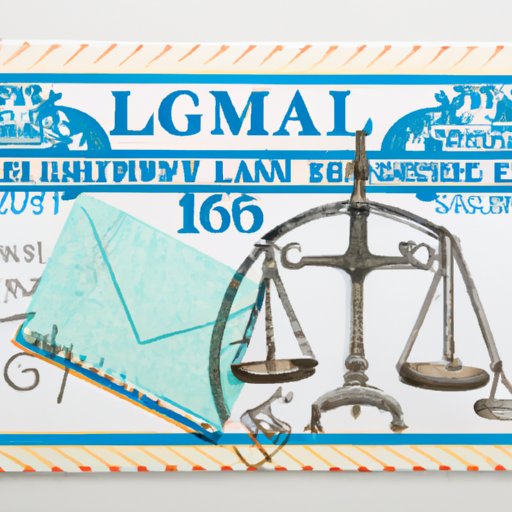
Introduction
Do you ever find yourself confused about how many stamps to put on your mail or package? The answer to this question depends on the weight of your mail and the type of postage you choose. Understanding how postage works can ensure that your mail arrives on time and at the right location. In this article, we’ll go over everything you need to know about postage by weight, including how to calculate postage costs and stay within your budget.
Everything You Need to Know About Postage by Weight
Postage by weight refers to the amount of postage required based on the weight and size of your mail or package. The United States Postal Service (USPS) offers different types of mail services, such as first-class mail, priority mail, and express mail, each with specific weight limits and postage rates. It’s important to know how much postage is required for your mail to avoid delays or additional fees.
Postage by the Ounce: A Simple Guide
The USPS charges postage based on the weight of your mail or package. For example, a standard letter weighing up to one ounce requires one first-class stamp, while a large envelope weighing up to 3.5 ounces requires three first-class stamps. For packages, the postage price increases with the weight and size of the package. You can use online postage calculators or visit a post office to determine the exact amount of postage required for your mail.
Staying Within Your Budget: Figuring Out Postage for Your Mail
Choosing the right postage option for your mail can help you stay within your budget. For example, using flat-rate boxes or choosing economy shipping can save you money on postage costs. Before sending your mail, you can estimate the postage cost by using a postage scale or checking the USPS website for postage rates. It’s important to check the weight and size limitations for each type of mail service to avoid additional fees.
Avoiding Return Mail: Calculating Your Postage Correctly
If you don’t have enough postage on your mail, it may be returned to the sender or your delivery may be delayed. To avoid this, you can use a postage scale or refer to the USPS website to determine the exact amount of postage required for your mail. It’s also important to double-check postage rates periodically, as they may change over time.
Maximizing Your Postage: Getting the Most Out of Your Stamps
Stamps can be used effectively to maximize your postage. For example, if you need to add extra postage to meet the required amount, you can combine different stamps or use additional postage methods such as postal meters or online postage to make up the difference. If you have leftover stamps, you can save them for future use or donate them to charity.
Making Postal History: Understanding Postage Rates and Weight Limits
Postage rates and weight limits have changed over time. The first postage stamp was issued in 1847, and since then the postage rates and weight limits have evolved along with technology and increased demand for mailing services. Today, the USPS offers a wide range of mail services and international shipping options with specific weight and size limits. It’s important to understand these limits to ensure that your mail is delivered on time and at the right location.

Keeping Up with Postage Changes: Tips for Staying Ahead of Mail Costs
Staying informed about changes to postage rates or requirements can help you avoid unexpected costs. The USPS website and mailing lists are resources you can use to stay up-to-date on postage changes, as well as information about new mail services and international shipping options. It’s important to stay ahead of these changes and adjust your postage accordingly to avoid delays or extra fees.
Conclusion
Understanding how postage by weight works and how to calculate postage costs can help you stay in control of your mailing expenses. Whether you’re sending letters or packages, it’s important to choose the right postage option for your needs and stay informed about changes to postage rates and requirements. Applying these tips can save you time and money, while ensuring that your mail arrives at its destination on time.




